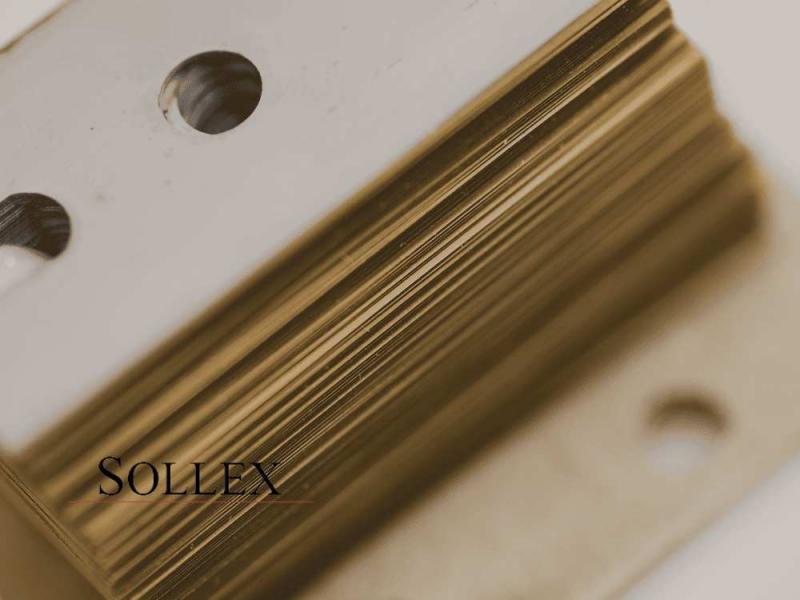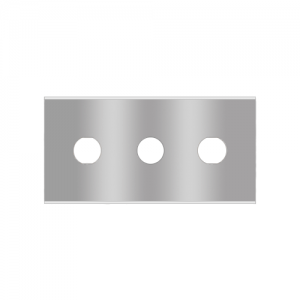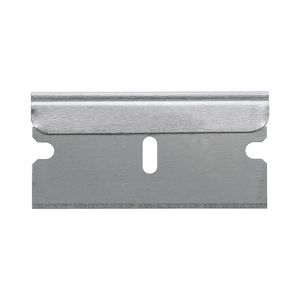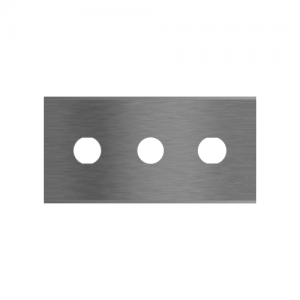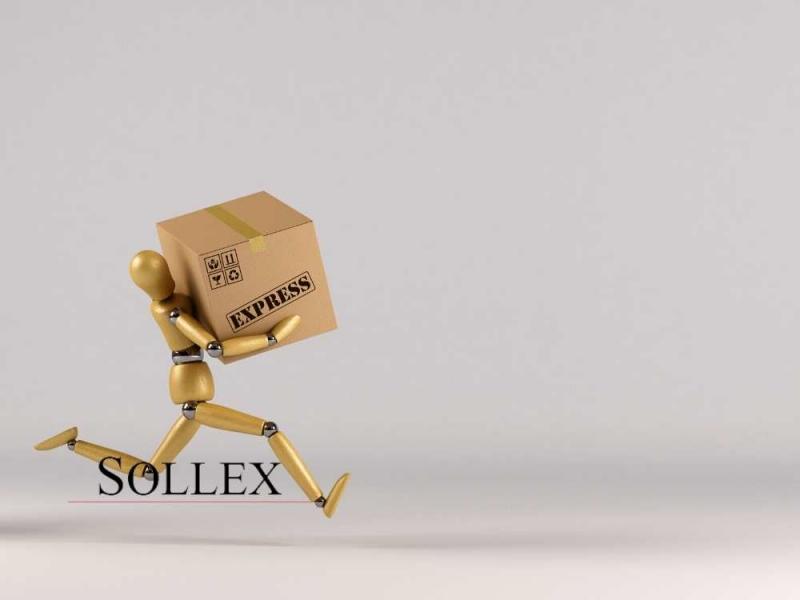Carbon steel for knives and razor blades
Content:
- About industrial blades made of carbon steel
- Features and advantages of carbon steel
- Carbon content in carbon steel
- Which carbon steel is suitable for industrial razor blades
- Hardening of carbon steel blades
- Carbon steel knife manufacturing process
- Carbon steel blade rust and how to avoid it
Sollex manufactures knives, industrial razor blades and tools in the following materials: carbon steel, stainless steel, Bi-metal, high-speed steel, tool steel, ceramic materials, solid tungsten carbide and cemented carbide. Sollex blades have real sharpness and durability due to high-quality materials, proven and quality-assured hardening and precision grinding.
Blades in carbon steel
 Carbon steel is a great material for knives and razor blades because it can be hardened to a high degree, resulting in a razor-sharp edge. Carbon steel knives and blades also retain their edge better than stainless steel equivalents. However, carbon steel is more prone to rust and corrosion, requiring greater care and maintenance.
Carbon steel is a great material for knives and razor blades because it can be hardened to a high degree, resulting in a razor-sharp edge. Carbon steel knives and blades also retain their edge better than stainless steel equivalents. However, carbon steel is more prone to rust and corrosion, requiring greater care and maintenance.
Carbon steel comes in several kinds used for knives and razor blades. Some of the most popular are:
- 1095 Carbon Steel. This high-carbon steel has outstanding edge retention and durability. It's a common choice for knife and razor blades.
- 1084 Carbon Steel. This high-carbon steel is comparable to 1095 but has significantly less carbon. It is also commonly used for knife and razor blades.
- O1 Tool Steel. This is a low-alloy carbon steel with exceptional edge retention and durability. It's commonly used for high-end knives and razor blades.
Carbon steel is an excellent choice for knives and razor blades if you are willing to put in the effort to maintain them properly. With proper care and maintenance, carbon steel knives and blades can provide excellent performance and durability.
Characteristics and advantages of carbon steel
Why is steel made of carbon? One benefit of carbon steel is its ease of grinding. An further benefit is that, in comparison to stainless steel, a carbon steel blade may be honed more precisely. The hardness, toughness, wear resistance, and edge sharpness of the steel are assessed as its characteristics. The material should be sliced with a blade that is sufficiently hard. But avoid pushing too hard as this can weaken the blade. The steel fractures or splits in such a situation. The blade's cutting capabilities and longevity are derived from its resistance and edge sharpness.
The Rockwell C, or abbreviated HRC, scale is used to quantify steel hardness. Steel may be ground more precisely the harder it is. However, a hard steel cutting edge is more susceptible to deformation due to the possibility of pieces chipping off the edge. Although a cutting edge with a lesser hardness cannot be as sharp, it can be more resilient. Steels for knives and razor blades with an HRC of 56 to 58 are referred to be medium hard. HRC between 62 and 65 is said to as very hard. By definition, Sollex blades made of carbon steel are very hard.
Carbon content in carbon steel
Blades are manufactured of various carbon steels due to their varying properties. The cutting properties are closely proportional to the carbon steel utilized. Many individuals discuss carbon content. In reality, this indicates a carbon level of 0.5 to 1%. The "eutectic" cutoff for high carbon content is 0.76%, and anything over that is considered high carbon. Carbon concentration more than 2.1% causes it to crystallize as iron carbide or cast iron. Knives and razor blades cannot be made with too high carbon content.
Optimal carbon steel for industrial razor blades
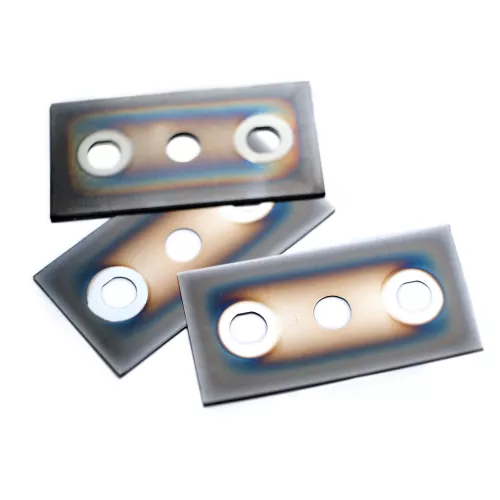 Sollex blades are constructed of carbon steel, unless noted differently. We can make blades and razor blades in a range of carbon steels (or DIN codes), but we prefer a steel with a high carbon and chromium content. Adding chromium to steel prevents it against rusting. Sollex blades include 95% carbon steel produced in Germany. Over time, Germany has achieved a particularly high level of expertise and quality in the manufacturing of carbon steels with high carbon and chromium content. German carbon steel outperforms cheaper steels owing to its steel structure and finer microstructure.
Sollex blades are constructed of carbon steel, unless noted differently. We can make blades and razor blades in a range of carbon steels (or DIN codes), but we prefer a steel with a high carbon and chromium content. Adding chromium to steel prevents it against rusting. Sollex blades include 95% carbon steel produced in Germany. Over time, Germany has achieved a particularly high level of expertise and quality in the manufacturing of carbon steels with high carbon and chromium content. German carbon steel outperforms cheaper steels owing to its steel structure and finer microstructure.
Hardening blades in carbon steel
In order to harden carbon steel blades, the steel must first be heated to a critical temperature and then quickly cooled. The steel undergoes a molecular structural change during this process known as quenching, which increases its strength and durability.
Heating carbon steel to a certain temperature is the initial stage in the hardening process. The critical temperature is normally between 1450°F and 1550°F (788°C and 843°C), however it might vary based on the particular type of carbon steel employed. The steel's crystal structure modifies at this temperature, enabling hardening.
Steel is rapidly cooled by submerging it in a quenching solution, which can be water, oil, or a specially designed quenching fluid, after it reaches the critical temperature. The rapid cooling causes the steel to become hard and brittle.
The blade is normally tempered after quenching by warming it to a lower temperature for a predetermined period of time, generally between 350°F and 600°F (177°C and 316°C). Tempering makes the blade more resilient and flexible while lessening its brittleness.
It should be noted that ability and accuracy are needed to properly harden and temper a carbon steel blade. A blade that has been improperly quenched or tempered may break, distort, or be too brittle or soft. Consequently, it's advised to leave this process to the experts or to have a great deal of metallurgical and blade-making competence. After being hardened, Sollex carbon steel blades have a uniform, consistent hardness that allows for the best possible cutting performance.
Sollex blades made in such carbon steel can be extremely sharpened or given long durability.
Carbon steel knife manufacturing process
First, we start with German-made, premium carbon steel. Rolling the carbon steel is the first step. The blade's form is then punched out. Normally, 600 punches per minute are produced, yielding 1200 blades.
The third step is to harden the steel, a process we refer to as "Eishardening" in German. After then, the steel is warmed to relieve stress. To prevent rust on our blades, we sometimes apply a surface treatment after marking. The term "oxidation" refers to this procedure for industrial razor blades. However, occasionally we also decide to paint the blades in order to prevent corrosion on the carbon steel.
After precision grinding, we do a second polishing to remove any possible burrs from the grinding. At this stage the blade is ready
Carbon steel blade rust and how to avoid it
 It rusts, carbon steel. Rust control is crucial for industrial-style blades used in production operations. This is a practical guide to keeping industrial machine knives and blades free of rust.
It rusts, carbon steel. Rust control is crucial for industrial-style blades used in production operations. This is a practical guide to keeping industrial machine knives and blades free of rust.
To assist prevent rust and wear, look for knives with extra coatings, such as ceramic (5K) or titanium nitride (5T), on the entire blade or cutting edges.
Knives should be kept in dry, designated spaces or containers. To further protect blades from moisture, use corrosion inhibitors, oils, or high performance industrial lubricants. Because well-oiled blades may resist corrosion for many years, lubrication is necessary. By keeping their blades well-oiled and protected from the air, users may stop their blades from rusting.
Maintain a regulated, low-humidity atmosphere in any spaces where blades are kept or utilized. Relative humidity should ideally be less than 50%. It is recommended to keep the temperature between 20 and 22°C (68 and 72°F).
Industrial blades from Sollex are always supplied well-oiled and vacuum-sealed.
Read more about how to prevent corrosion of industrial knives and blades in our other blog post.
Sollex is a Swedish supplier of industrial knives and machine blades! We have cutting products with cutting-edge technology and performance that improve manufacturing and converting processes and solve problems. With the right knives and blades you can get simplified maintenance, time savings and an improved end product.
You are welcome to contact us with your questions:
Company name: Sollex AB
Customer service and orders: order@sollex.se
Telephone: +4635–15 75 00
Address: Box 5161, 200 71, Malmö, Sweden

